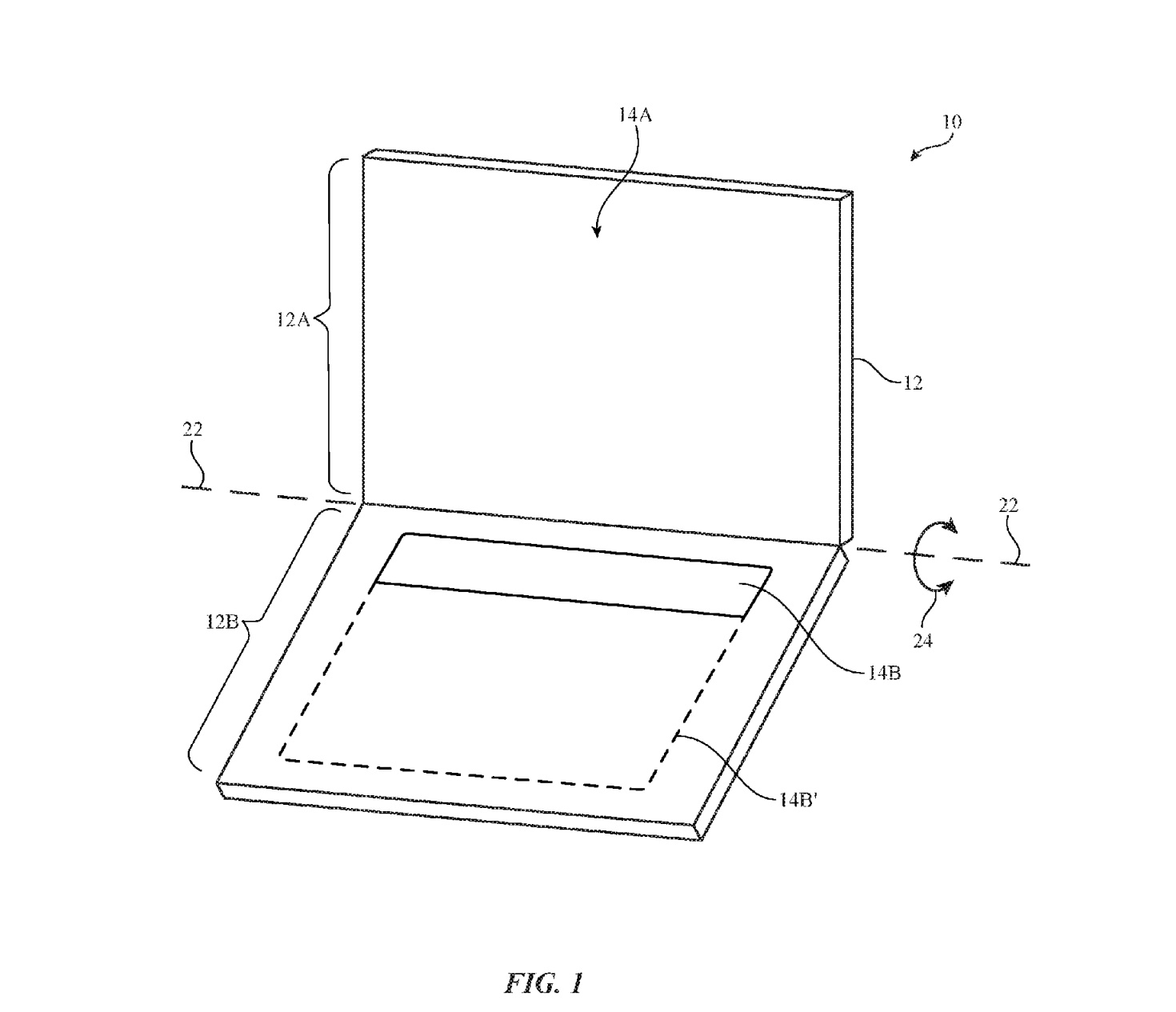
Tuesday, February 27th, a new set of patents was granted to Apple Inc, among which lies a concept that could potentially shape the future of the Macbook line, and perhaps even that of desktop-bound Apple Macs.
The patent number US 201700390 18A1, and titled “DUAL DISPLAY EQUIPMENT WITH ENHANCED VISIBILITY AND SUPPRESSED REFLECTIONS”, illustrates the concept of operating a Mac desktop, or laptop, in much the same way as an iPhone or an iPad, through a secondary touchscreen where the user may access a virtual on-screen keyboard and, possibly in future Macbooks, a virtual trackpad.
In one example, the secondary screen is physically connected to the device, may that be a Macbook or Mac desktop, to serve as stationary keyboard, trackpad, and perhaps even graphic tablet. This concept may place iMac Pros, or future descendants, to compete directly with products like Wacom’s tablets, and Microsoft Surface Studio PCs, by offering a product designed to be flexible enough to cater to creative professionals and engineers, as well as gamers, and regular consumers, by customizing the look, feel, and scope of the secondary screen, in a similar way as what Apple has done with the MacBook Pro’s Touch Bar.
A second example of use was provided, describing the secondary screen as a detachable component, reminiscent of the detachable base of Microsoft’s Surface Book. This concept would open the possibility to operate different Mac devices independently, via a wireless touchscreen keyboard, or an iPad.
One aspect that is not clear, whether or not Apple ever decides to turn this patent into a real product, is the experience users may expect out of this new accessory. One fundamental problem of touchscreen keyboards, and really of any keyboard that is too thin, is that touch-typing may be impossible due to the inability to feel the keys before they are pressed. With that said, it might be possible for Apple to develop, or acquire technology that allows touchscreens to change their physical appearance, via special polymers that react to currents in a similar way as liquid crystal displays do on calculators, except that instead of the digits turning opaque, a chemical reaction could be used to create bumps, creases and other geometric deformation of a touchscreen, to simulate the feeling of a physical keyboard.
Apple owns already several patents that describe similar applications, which may or may not be an indication of what future Apple products could look, sooner or later.
Ready to shop?
Looking for the most powerful desktop created by Apple? PortableOne is where you can buy the All-New Apple iMac Pro a production powerhouse for high-end creative professionals, with endless possibilities, and unprecedented specs.